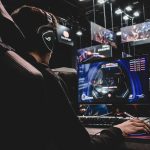The advent of high-definition graphics and more powerful hardware has brought a new level of realism to computer and video games. Yet, the challenge of accurately modeling and simulating hair physics in real-time remains one of the most complex issues in game design. You’re probably familiar with the awkward and unnatural hair movements often seen in even the most high-end games. Fortunately, a host of strategies and technologies have emerged to tackle this issue head-on. We’ll delve deep into them, shedding light on the best strategies for implementing real-time hair physics in character-driven games.
Exploiting Advanced Physics Engines
Physics engines are critical components of any game development toolkit. They are responsible for simulating the laws of physics in a virtual environment, providing realistic movement and interactions between characters and their surroundings.
Also to read : What are the best practices for implementing realistic traffic systems in urban simulation games?
In the realm of real-time hair physics, advanced physics engines like NVIDIA’s PhysX and Havok have been instrumental. These engines include features for simulating the behavior of thousands of individual hair strands. They can model the effect of forces like gravity, wind, and collisions, resulting in hair movements that are incredibly close to actual human hair.
The key to exploiting these engines is understanding their inner workings and learning to tweak their parameters effectively. For instance, adjusting the elasticity and damping coefficients can dramatically influence how hair bounces and flows. It’s crucial to experiment with these settings and test the results in a variety of scenarios.
In parallel : How can developers leverage facial recognition technology for personalized gameplay experiences?
Harnessing the Power of Tessellation and Shader Technologies
Tessellation and shader technologies are another cornerstone in achieving realistic hair physics. Tessellation is a technique used to increase the number of polygons in a 3D model, thereby enhancing its level of detail. This is especially important for hair, as higher polygon counts allow for more accurate modeling of individual hair strands.
On the other hand, shader technologies like Vertex and Pixel Shaders handle how these polygons are rendered on screen. They control aspects such as color, brightness, and texture, contributing significantly to the visual appearance of hair.
Combined, tessellation and shaders can depict individual hair strands that not only move realistically but also look natural, reflecting light appropriately and blending well with the rest of the character model. One must, however, be conversant with the intricacies of these technologies to leverage them effectively.
Leveraging Hair Simulation Software
In addition to physics engines and tessellation, specialized hair simulation software like TressFX and HairWorks have emerged. These tools are designed to handle the complexities of hair physics, reducing the amount of manual work required by developers.
For instance, TressFX, developed by AMD, uses the DirectCompute programming language to manage thousands of hair strands individually. It simulates key physical properties like stiffness, bending, and curling, resulting in a highly realistic hair behavior.
Likewise, NVIDIA’s HairWorks includes a suite of development tools and APIs specifically for hair simulation. It offers a rich feature set, including dynamic hair and fur, self-shadowing, and anti-aliasing.
By integrating these tools into the development process, developers can achieve realistic hair physics without sacrificing significant time and resources.
Exploring Procedural Generation Techniques
Procedural generation is another promising approach in the quest for realistic hair physics. Unlike traditional techniques that rely on predefined models and animations, procedural generation creates content algorithmically, based on certain rules and parameters. In the context of hair physics, this involves generating individual hair strands and their movements dynamically.
Procedural generation provides several benefits. Firstly, it allows for a high degree of customization, as different parameters can be adjusted to achieve different hair styles and behaviors. Secondly, it’s highly efficient, as hair can be generated and simulated on the fly, reducing the need for extensive pre-rendering.
However, mastering procedural generation requires a good understanding of algorithms and mathematical models related to hair physics. It also necessitates an iterative approach, where parameters are continually adjusted and the results tested until the desired outcome is achieved.
Integrating Machine Learning and AI
The final strategy we’ll consider involves integrating machine learning and AI into the process. Through machine learning, models can be trained to understand and simulate the complex dynamics of hair movement based on large datasets of real-world examples.
For instance, deep learning algorithms could be used to analyze slow-motion footage of various hair types and styles, learning how they behave under different conditions. This trained model could then be used to generate highly accurate, real-time hair physics in games.
AI can also be used to optimize the simulation process. Rather than simulating every single hair strand, which can be computationally intensive, AI can determine which strands are most visible or impactful, focusing computational resources on them.
While this approach requires a significant amount of data and computing power, the potential payoff in terms of realism and efficiency is immense. Plus, with the ongoing advancements in AI and machine learning technologies, it’s a strategy that’s set to become ever more viable and effective.
Combining Strategies for Optimum Results
A single strategy can be highly effective in achieving real-time hair physics. However, combining different techniques often yields the best results. The choice of strategies depends on many factors, including the game’s specific requirements, the available resources, and the development team’s expertise.
For instance, a physics engine can be used to simulate the fundamental forces acting on the hair, such as gravity and wind. Tessellation and shader technologies can then add the next layer of detail, creating individual hair strands that look incredibly real.
On top of that, hair simulation software can be used to handle the complex interactions between these strands, while procedural generation can provide the necessary flexibility and efficiency. Lastly, machine learning and AI can be used to bring everything together, creating a model that learns and evolves based on real-world examples.
It’s crucial to remember that these strategies are not mutually exclusive. They can, and often should, be used in conjunction. For instance, physics engines and hair simulation software can be used together to achieve a high degree of realism. Similarly, tessellation and shaders can be combined with procedural generation to create customizable and dynamic hair.
The quest for realistic hair physics in real-time games is a complex challenge that game developers are continually striving to overcome. Thankfully, a host of strategies have emerged to tackle this issue. From advanced physics engines and tessellation technologies to specialized hair simulation software and procedural generation techniques, developers now have a wide range of tools at their disposal.
Recent advancements in machine learning and AI have opened up even more possibilities, promising a future where game characters’ hair not only looks real but behaves realistically under any condition. While each of these strategies has its strengths and challenges, combining them can often yield the best results. By understanding these techniques and learning to leverage them effectively, game developers can take a significant step towards creating more immersive and realistic gaming experiences.
As technology continues to evolve, we can expect to see even more impressive advances in real-time hair physics. However, as with any aspect of game design, the key to success lies not just in the technology but also in the creativity and skill of the developers who wield it. Regardless of the strategies they choose, their mission remains the same: to create engaging, believable, and immersive gaming experiences that captivate and delight players.











